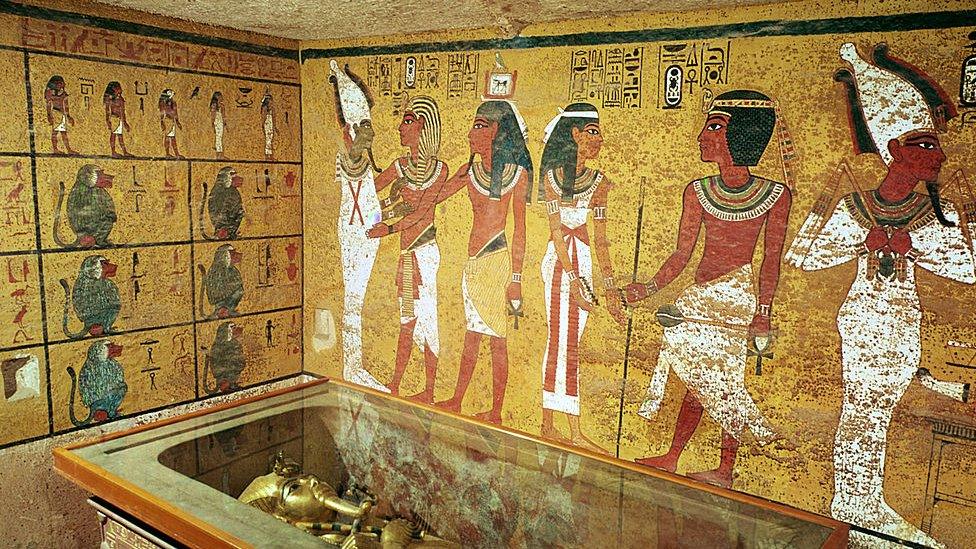New clues could lead to Queen Nefertiti's tomb
- Published
- comments

Experts think Queen Nefertiti's tomb could be hidden near this tomb of King Tutankhamun
New clues discovered in Tutankhamun's tomb have led experts to believe that Queen Nefertiti's body is hidden in a tomb nearby.
Tutankhamun was one of history's most famous kings. Queen Nefertiti was his step mum and a legendary queen in Ancient Egypt.
Nicholas Reeves, a former curator in the British Museum's Department of Egyptian Antiquities, said recently discovered hidden hieroglyphics found in Tutankhamun's tomb, support his theory that Nefertiti lies in a hidden chamber near her stepson.
Queen Nefertiti is famous for her beauty and being a powerful queen.
Born around 1370 BC she was the wife of King Akhenaten, who was the dad of King Tutankhamun.
Jenny's reports on the search for Queen Nefertiti's tomb
Nicholas Reeves said that cartouches, which show Tutankhamun being buried by the pharaoh who came after him, who was called Ay, had been painted over cartouches of Tutankhamun burying Nefertiti.
Cartouches are oval-shaped hieroglyphics that contain the names of gods and royal people in Ancient Egypt.
Reeves told the Guardian newspaper: "I can now show that, under the cartouches of Ay, are cartouches of Tutankhamun himself, proving that that scene originally showed Tutankhamun burying his predecessor, Nefertiti. You would not have had that decoration in the tomb of Tutankhamun."
Reeves says this new evidence supports his theory from back in 2015, that there is a hidden chamber in Tutankhamun's tomb and the legendary Queen Nefertiti lies in this secret room.
The Egyptians believed in an afterlife - the idea that they would live on after their death.
As well as their bodies, which were preserved through mummification, Egyptians also believed they would need their belongings in the afterlife.
Rich and important Egyptians were buried in tombs with all their treasure.
- Published18 January 2021
- Published19 March 2022
- Published28 November 2015
